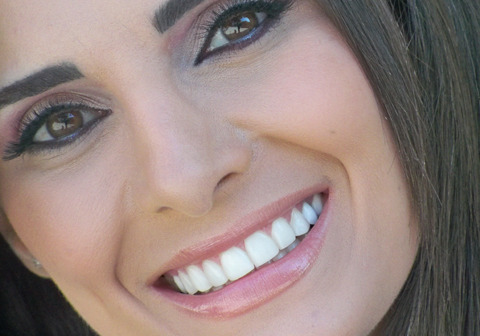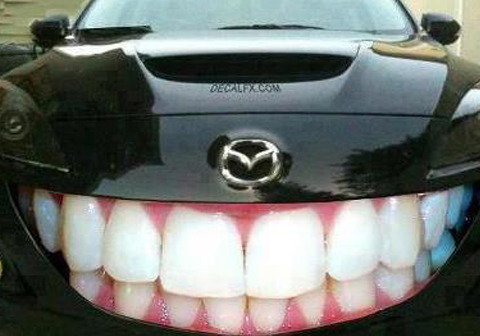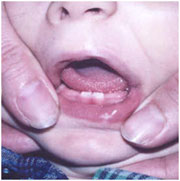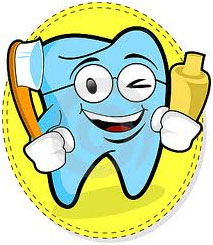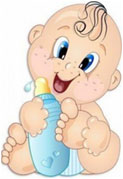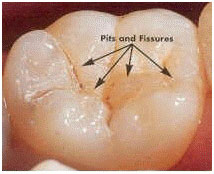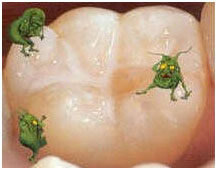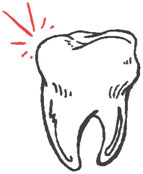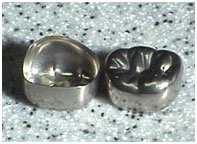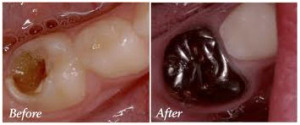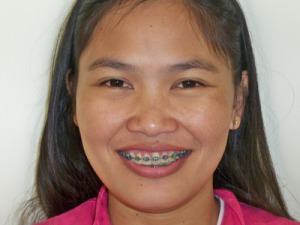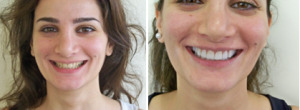
1-What is the difference between a dentist and a pediatric dentist?
A pediatric dentist is trained specifically for several years and its daily practice is exclusively for child care, from an early childhood through adolescence. A pediatric dentist is concerned with the prevention, early detection and treatment of dental caries in children. It seeks to establish a relationship of trust with the child, to make a positive experience during their non-traumatic contact with the dental profession, so that it can continue throughout his adult life.
 Our goal is to help children grow up with healthy teeth and mouth, by teaching your children good oral habits that will last a lifetime.
Our goal is to help children grow up with healthy teeth and mouth, by teaching your children good oral habits that will last a lifetime.
2 – At what age should children see a pediatric dentist?
The first dental checkup for a child should be held one year or six months after the eruption of the first primary tooth.
Age 1: First review
Age 2: Second Review
Age 3: Review PLUS the first treatment for cleaning and fluoride.
3-How important is the first visit?
At the first appointment, your pediatric dentist will discuss the use of food hygiene measures (brushing, toothpaste, etc. …), silk evaluate fluoride needs and inform you about the different habits to adopt for prevention of dental caries and malocclusion in children.
Some dental problems specific to the child such as baby bottle tooth decay can easily be prevented, to a review a year be able to detect and prevent such problems. In most cases, early treatment of this type of decay can prevent more serious dental problems in the future.
5-What is the frequency of inspections and hygiene in children?
Control, every six months is recommended for children.In fact, tooth decay can progress rapidly in children, without symptoms or pain. However the frequency of monitoring should be adapted according to the caries risk of the child. Children who have dental caries and poor oral hygiene are more often recalled. The risk is assessed at each visit.
6-What will the visits of recall?
To raise your child good dental hygiene, ensuring `s good dental health.
To check if the baby teeth fall at the right time so that the adult tooth `s up well on the jaw.
To prevent and intercept the various problems related to the growth of the jaws.
To check if the permanent teeth grow properly, follow their eruption and thus escape processing complex `orthodontics.
To qualify for `preventive treatment of pit and fissure sealants on permanent molars, and on this, as they emerge.
To treat decay early as in the `child tooth decay progresses rapidly and should be treated as` appeared in order to avoid future problems much more serious.
7 – Why are primary teeth (milk) are important?
Primary teeth healthy is important to chew, speak and smile. They also serve to maintain the `space` s adult teeth and guide them in a good position on the jaw.
8 – How to prevent tooth decay in children?
The establishment of good habits of oral hygiene and food from an early age prevents in most cases the occurrence of dental caries.
However, many children have multiple caries at an early age after a prolonged and frequent use of the bottle containing natural milk, fruit juice, other sweetened liquids or prolonged breastfeeding. This condition is called “baby bottle syndrome”
Therefore it is important to never let your child fall asleep with a bottle or breast.
It should also be careful with medicines, including syrups, homeopathic medicines and asthma that are high in sugar. Taking these drugs before bedtime can cause tooth decay.
Snacking throughout the day and the intake of beverages, soft drinks (Coca-Cola for example) is often a poor eating habits of today’s teenagers. They participate in the development of dental caries in permanent teeth.
In any case, it is essential to brush your teeth twice a day, morning and especially at night.
9 – What is `what` a parent can do to help the `child during visits to the dentist?
Let the dentist and his team the task of explaining and describing `dental treatment for your child. They will use the terms `that a child can understand and image processing steps according to their understanding. As a parent before the appointment you can simply tell your child that the dentist will count his teeth and brushes. If you bring your child into the treatment room, be a silent partner, leave the dentist directly interact and communicate with your child.
Consider the day of the appointment as a normal day, do not as a special day. Do you stay relaxed even before and during the visit of your child. A positive attitude on your part will help to maximize your child to have a positive experience.
10 – What are pit and fissure sealants?
Molar non-protected
susceptible to decay Molar with Sealant
pit and fissure
Sealants are a protective barrier resin which is applied in pits and fissures of posterior teeth, protecting places most likely to decay.
Children are more likely than adults to develop tooth decay and should be sealed as soon as their back teeth which erupt (about 6 years).
The application of sealants is very easy for the` child. The process is quick and painless. Once applied, the life of sealants is 10 to 15 years.
11 – At what age should you start brushing children’s teeth?
At the onset of the first tooth, teeth cleaning should be done with a swab or a toothbrush “first age”. It is quite advisable to use a small amount of toothpaste (corresponding to small nail of the child) low-dose fluoride (250 ppm to 500 ppm). A As the evolution of the molars, you can increase the dosage of fluoride toothpaste. If your child does not take fluoride supplements (drops or tablets) you can use toothpaste dosed at 1000 ppm.
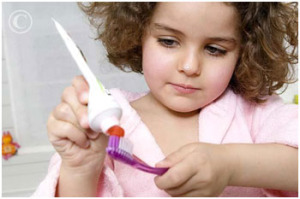
Brushing should be done by parents, twice a day, the morning after breakfast, and especially at night before bed. Parental control is essential until the age of 10-12 years.
12 – Should we give fluoride to children?
Fluoride plays a major role in preventing oral.
Fluoride is present in toothpastes, some bottled water, some salts and complementary inputs such as drops and tablets. The greater part of French territory, tap water is generally not fluoridated. The sources of fluoride are multiple, a review of fluoride intake must be completed before any prescription to avoid an overdose. A pediatric dentist may, after establishing this balance, adjust recommendations for fluoride to each patient.
In small amounts, fluoride is very beneficial:
It stabilizes and strengthens the enamel of teeth during and after mineralization, it greatly reduces the risk of caries.
But an excess of fluoride from all sources (ingestion of toothpaste for children who can not rinse mouth, overdose of fluoride drops or tablets, other inputs not detected by a fluorinated fluorinated balance) is harmful, it increases the risk of fluorosis is a defect of enamel, unsightly and safely, which is manifested by spots or white lines on the teeth. These spots can be more or less pronounced depending on the degree of fluorosis. If fluorosis is severe, the enamel often shows major malformations and brown spots.
13-What if the child sucks his thumb, a finger or a pacifier?
Thumb sucking, finger or pacifier is a common occurrence in young children, it is not a real problem before age 5. Risk is a malposition or malocclusion of the permanent teeth when they occur. We must as soon as possible to try to “replace” the thumb or finger in the nipple. Indeed, it is generally accepted that the decision of sucking of the teat is earlier when the social life of the child becomes more important. A pediatric dentist can encourage your child to do so. This recommendation and your determination with most children to easily stop sucking. However, if this approach is not effective, your dentist may recommend a brace to prevent suction.
14-Diseases
Cavities can change very quickly.
The pulpitis are fewer and shorter. They can occur without pain, much more frequently than in adults.
However abscesses of dental origin occur more easily in children than in adults.
Nursing bottle syndrome: syndrome called multiple bottle tooth decay occurring in young children (from 2 years), especially on the buccal surfaces of anterior teeth. These cavities are favored by: a prolonged breastfeeding, the permanent presence at bedtime or a bottle containing a sweet liquid, a limited oral hygiene.
15-Treatment
* Prevention by oral hygiene in pediatric dentistry
* Conservative Dentistry
Care decay are identical to those of the permanent tooth.
* Endodontics
However endodontic treatment differ.
* Pulpectomy: indicated in cases of total pulp inflammation or in the case of Le endodontic treatment is to remove the inflamed or necrotic pulp parenchyma and disinfect the root canal content. The root filling is made with a paste of zinc oxide eugenol. Indeed we will not do a root canal filling with gutta cones as the permanent teeth. The cones of gutta do not resolve and might block the root resorption.
* Pulpotomy: indicated in cases where the pulpal inflammation is localized to the pulp chamber, a pulpotomy (to the removal of the pulp canal pulp cameral preserve vital to the state or condition set)
Prosthesis *
On the prosthesis, when the tooth has a crown restoration when it is extended or endodontically treated, it must be protected by a ring called pedodontics preformed cap.
It can also make small resin removable appliances if several teeth were extracted early.

Data Coming Soon

Data Coming Soon…
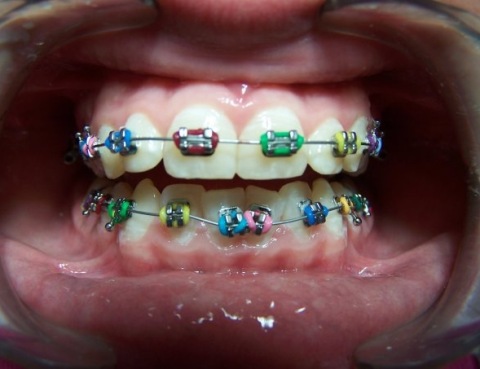
What is orthodontics?
Orthodontics is the dental specialty that focuses on the development, prevention, and correction of irregularities of the teeth, bite, and jaws. Orthodontists also have specialized training in facial abnormalities and disorders of the jaws. A patient may consult an orthodontist after receiving a referral from his or her general dentist recommending orthodontic treatment to improve the patient’s physical “orofacial” appearance. However, the American Dental Association recommends that every child receive an orthodontic evaluation by the age of seven.
Why choose orthodontic treatment?
Any orthodontic problem may be classified as a malocclusion, or “bad bite.” The following problems may be helped or minimized with proper orthodontic treatment:
-Misaligned, or crowded teeth
-Missing teeth
-Extra teeth
-An overbite
-An open bite
-Misaligned or incorrect jaws position
-A disorder of the jaw joint
At what age do braces become appropriate?
Moving and correcting the alignment of the teeth follows the same biological and physical process no matter what the age is. However, an adult mouth must overcome already positioned facial bones and jaw structure. Thus, overcoming most types of malocclusions may require more than one type of orthodontic treatment for adults. In most cases, the ideal age for braces and other orthodontic treatments is between 10 and 14 years of age, although people of any age can benefit from treatment.
What are the different types of braces available?
Braces, also called fixed orthodontic appliances, generally come in three varieties:
-Brackets, metal or ceramic, clear or tooth-colored, that are bonded to teeth
-Lingual-type brackets that attach to the back of teeth, hidden from view
-Bands that cover most of the teeth with metal bands that wrap around the teeth
All three types use wires to move the teeth to the desired position.
Oral healthcare and braces
The following recommendations will help to eliminate, or reduce, any oral health problems while your teeth are in braces:
-Brush your teeth carefully after every meal with fluoride toothpaste and a soft-bristled toothbrush, as food becomes easily lodged in the braces. A new toothbrush may be needed every three to four months or sooner if bristles are broken or frayed. A worn toothbrush doesn’t do a good job of cleaning the teeth.
-Floss daily between the teeth and the braces.
-Rinse your mouth daily by a mouthwash recomended by your orthodontist.
-Visit your dentist for cleanings every four to five months.
-Limit your sugar and starch intake, as debris left behind from these types of foods may turn into damaging acids, which, in addition to promoting plaque formation, may also be harmful to teeth and gums.
-Avoid hard and/or sticky snacks that may be difficult to remove from the orthodontic equipment in your mouth. This includes hard foods such as popcorn, hard candy, nuts, and sticky foods like chewing gum, caramel, and other chewy candy.
-Ask your dentist about the application of a fluoride varnish around the braces to minimize white spots on the teeth after the braces come off.
Othodontic Removable Appliances
What are removable orthodontic appliances?
Contemporary orthodontic treatment involves the use of both fixed and removable appliances. Fixed appliances, also known as braces, form a major part of the orthodontic treatment. Although removable appliance play only a supporting role in comprehensive treatment, they are important in the orthodontic treatment of children.
Removable appliances are appliances, which can be easily removed and reinserted into mouth. They consist of wires and screws held together by a plastic base and are used to move teeth and jaws into better relationships using gentle force.
What are the uses of these appliances?
They are useful when small amount of orthodontic correction is required.
It is sometimes possible to change the way the jaws grow, using orthodontic appliances. A special kind of removable appliance called functional appliance harness the power of the jaw muscles and can help with certain types of problem.
After tooth movement using braces is complete, a retainer (which is a kind of removable appliance) must be worn to hold the teeth and jaws in their new and proper position. The retainer must be worn for approximately one year to help prevent the teeth or jaws from falling back to its original or starting position.
What are the parts of a removable functional appliance?
The removable appliance consists of an active element or elements (i.e. metal wires and/or screws), which exert orthodontic forces on the teeth, and retentive elements (i.e. clasps), which help, in retaining the appliance in the mouth. A plastic plate holds these two sets of elements together. It is more commonly used in the correction of teeth in the upper jaw.
How are the appliances made?
Unlike braces the removable appliances are made in the dental lab. A plaster model is created from an impression of the patient’s jaw, over which the appliance is designed and made. The finished appliance is then fitted on the patient.
What are the advantages of using a removable appliance?
-It is inexpensive
-It is relatively simple to adjust, requiring little clinical time.
-If the appliance causes any irritation the patient can remove it.
-It can be removed for cleaning; therefore oral hygiene is seldom a problem.
-It may be removed for contact sports; therefore damage to the patient (and appliance) is reduced to a minimum.
What are the disadvantages of using a removable appliance?
-It tends to be rather bulky and takes some time to get used to.
-It is unsuitable for most treatment in the lower arch, as the shape of the lower teeth does not allow the appliance to be satisfactorily retained.
-Removable appliances can only carry out tipping movements and other drastic movements like the complete rotation of the tooth is not possible.
-Co-operation of the patient is very essential for the success of the treatment.
-Results occur much slower when compared to Braces.
How are removable appliances maintained?
-It must be worn constantly to derive early and good results.
-When outside the mouth it should be stored in a cup of cold water. Exposure to heat can alter the shape and fitting of the appliance.
-It should be removed in advance before any contact sports and during meals.
-The appliance has to be removed and inserted carefully to avoid breaking the plastic or deforming the wires.
-The appliance has to be kept clean. A toothbrush is convenient for this purpose.
Invisalign
Invisalign takes a modern approach to straightening teeth, using a custom-made series of aligners created for you and only you. These aligner trays are made of smooth, comfortable and virtually invisible plastic that you simply wear over your teeth. Wearing the aligners will gradually and gently shift your teeth into place, based on the exact movements your dentist or orthodontist plans out for you. There are no metal brackets to attach and no wires to tighten. You simply pop in a new set of aligners approximately every two weeks, until your treatment is complete and you achieve the confident smile that you’ve always wanted. The best part about the whole process is that most people won’t even know you’re straightening your teeth.
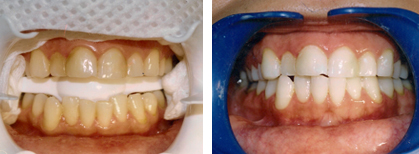
Teeth whitening have been carried out in the USA for approx 20 years and for over a decade in the UK. Carried out properly, it is safe, pain-free, and provides a simple and lasting aesthetic benefit.
There are two principal methods by which teeth can be whitened. They are best described as At Home Whitening and In-Surgery Whitening. To achieve the ultimate in whiter teeth it is sometimes best to use a combination of the above methods.
Suitability for tooth whitening
Nearly everyone with healthy teeth and gums is suitable for a course of tooth whitening. However, to ensure that whitening is pain-free and to select the most appropriate method for any given individual it is important that a full and thorough assessment of the dentition is first undertaken. At this consultation visit the available options and your individual needs are discussed in detail and the most appropriate course of whitening is jointly determined between patient and dentist.
Certain conditions affecting the teeth, such as Tetracycline staining, will require determined and longer whitening schedules whilst natural browning/yellowing or age related darkening is usually quick and simple to reverse.
At-Home Tooth Whitening
Impressions of the teeth are first taken. From these moulds the laboratory can construct custom-made whitening trays (Gouttieres) specific for each individual. An appropriate whitening agent is then placed inside the trays which are then worn over the teeth for a period of time. The type and concentration of whitening agent, the original color of the teeth, and the desired end result all determine how long the trays are worn. Typically, the trays are worn overnight for a period of 14-21 days although this varies considerably.
In-Surgery Tooth Whitening
There are many methods to achieve a whiter smile in the dental chair. All the available methods do however, follow a similar pattern: Firstly, the gums are protected by barrier membrane. Specially formulated whitening agents are then applied to the teeth. Some of these agents require laser-light activation, others activate upon contact with the tooth. Once the course has been completed the protective membrane is peeled off to reveal whiter teeth. The whole process takes about an hour to complete.
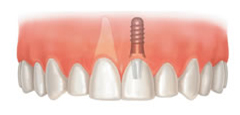
Data Coming Soon
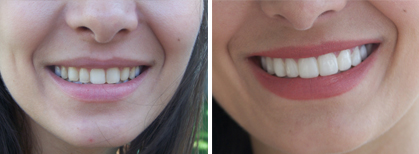
Hollywood smiles are achieved by using a combination of all or some of the following: tooth whitening, crowns, veneers, and orthodontics.
Veneers are very commonly used to enhance the smile. To put things into perspective, for example, when an actor or an actress has had their teeth done, they have probably had veneers fitted. Laminate veneers can be used in a variety of clinical situations e.g. color defects or abnormalities in enamel can be masked. These veneers allow changing the length, width, color and shape of tooth although not exhaustive; the following list gives a range of situations in which veneers can be used.
Intrinsic staining or surface defects caused by:
-aging
-accidents
-medication (e.g. tetracycline),
-lack of mineralization
-improper natural development
-erosion and abrasion
-fluorosis
-extrinsic permanent staining not amendable to tooth whitening procedures
-misalignment of the teeth
-improper teeth morphology, to improve the esthetics
We have here three kinds of veneers:
Ceramic veneers
They are ceramic laminates which are approximately 1 1.5mm thin and are bonded over the front surfaces of teeth after drilling. They provide a dramatic aesthetic enhancement. After assessment and approval the teeth are prepared to accept the veneers. When teeth do require preparation, the facing surface of the teeth is re-contoured by 1-1.5 mm. Impressions are then taken from which the ceramist can construct the veneers. Temporary veneers are immediately placed over the teeth to protect them and maintain the smile. Once fabricated (in the laboratory) the temporary veneers are removed and the ceramic veneers are fitted. This procedure takes around 3 sessions. And their life span is around 10 to 15 years.
Composite veneers
They depend on the dentist skills and are directly bonded to the teeth in one session.
They are cheaper than the ceramic veneers and require polishing every 4 to 5 months.
Their life span is around 5 years.
Lumineers
Lumineers are unique in that they are ultra-thin (approximately 0.2 mm) and highly translucent, allowing them to replicate the natural appearance of enamel. While traditional veneers are much thicker, requiring the grinding down of your original tooth structure, Lumineers are so thin that little to no tooth reduction is necessary. Additionally, the durability of Lumineers allows them to resist wear and remain resilient to last over 20 years.
While traditional veneers involve a much longer, more painful process that can take months, Lumineers placement is quick and painless. In contrast to traditional veneers, Lumineers don t require shots or drilling of sensitive tooth structure, and that means no pain. That s because Lumineers are ultra-thin so they can be applied seamlessly over your existing teeth in only two easy visits to your dentist.
The Lumineers procedure is a completely pain-free way to reshape and permanently whiten your teeth. Because they are ultra-thin, in most cases you will get a perfect fit without shots or grinding down of the original tooth structure. Once the procedure is completed, there is no post placement discomfort or sensitivity, which means Lumineers, will look natural and feel comfortable from the moment they are placed.
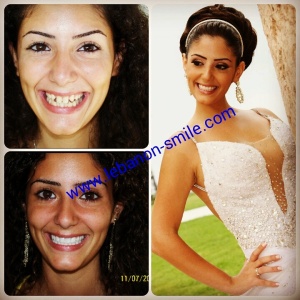

Data Coming soon…

